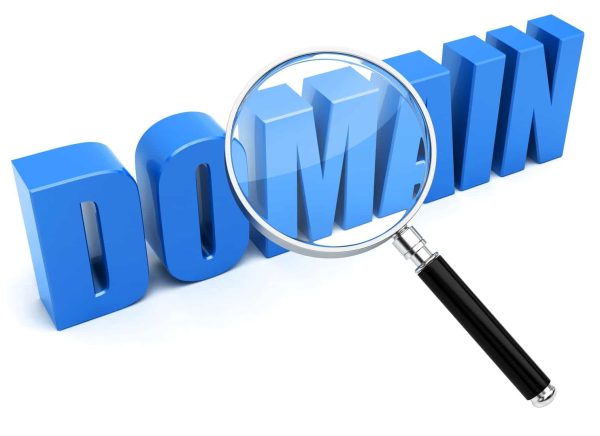Let’s learn more about What are the 5 types of domains? so that you may decide which one best matches your needs. domain name reflects and brands your internet business.
The days when consumers solely made purchases in physical stores are long gone.
Many shops now do the majority of their business online thanks to the internet, forcing companies who don’t use eCommerce to scramble to establish an online presence.
Over half a trillion dollars in eCommerce sales are anticipated in the United States by year’s end, with three in four people making at least one online purchase annually. It seems that e-commerce will continue to rise and that this expansion won’t stop anytime soon.
Naturally, there may be an increased rivalry for domain names if more companies decide to get online.
What are the 5 types of domains?
What are the 5 types of domains? Finding a good web address will surely be difficult if you want to operate a website or online business. Finding the correct domain, however, is sometimes more difficult than it seems due to the wide variety of domain types available.
You must choose a compelling and distinctive name, where the second-level and third-level domain types are crucial. On the other side, you’ll require an appropriate top-level domain, also known as a domain ending.
The most crucial queries regarding domain types will be answered in the guidance that follows. What are the 5 types of domains? What are the different kinds of domain endings and what do they denote? What distinguishes the various domain levels of a domain name from one another? How can you determine which domain type is most appropriate for your project?
Learn the concept of domain

The web address nomenclature used to locate your website or a particular page of your website online includes a domain. It is much easier for consumers to look for and remember since it is a string of text that is linked to a website’s numerical IP address.
Every website has an IP address, a unique combination of numbers that connects computers to web servers. IP addresses are great for computers, but they are difficult for people to remember. Domains can help in this situation.
Because a domain name and an IP address are linked, users may more easily remember and search for a website by its domain even though their browser will still utilize the relevant IP address to find the specific web server that is hosting the website.
A domain is sometimes compared to a home address. When your friends want to visit you, they don’t always remember the GSP coordinates of your home. Instead, they just type your street address into their phones.
The same holds when looking at a website. Visitors only need to enter the domain of a website into their browser rather than remembering the IP address. But the question here is What are the 5 types of domains? Let’s find the answer.
Read More: What is domain example for beginners?
What are the 5 types of domains?

There are 5 distinct domain types. Let’s explore the many domain name categories that are available for you to register now that you have a better knowledge of what domain names are and how they function.
Most people often think of websites with the normal “.com” domain when they consider them. Even though this is the most popular extension, there are several other kinds as well.
What are the 5 types of domains? You may choose from five distinct categories of domains. Some won’t be accessible until you’re managing a specific sort of website, but we go into more depth on this below.
What are the 5 types of domains? Top-Level Domains (TLDs)
The hierarchy of domain names on the internet is headed by top-level domains. These are frequently referred to as TLDs.
There are dozens of distinct TLDs to choose from. Since ICANN opened up new TLD registration and approval in recent years, businesses and individuals have been able to propose and register distinctive TLDs. This caused the number of TLDs to increase dramatically.
Top-level domain examples:
Keep in mind that you should select a top-level domain for your domain that complements or strengthens your brand and the domain as a whole. Even if a certain TLD may be accessible, you are not required to register it.
Many TLDs are more akin to vanity extensions than they are anything you should utilize as the core of your website.
Country-specific Top-Level Domains
What are the 5 types of domains? Top-level domains (TLDs) with a country code come next on the list. These are, properly speaking, connected to several nations, as their name indicates. Although each nation has its ccTLD, you are not required to use one simply because you reside there.
For instance, even though ccTLD.co is officially reserved for domains with Colombian origins, and internet businesses like AND.CO frequently utilizes it.
If you’re creating a website for a certain nation and want to let your visitors know they’ve arrived at the appropriate spot, these domain extensions might be helpful.
Companies from Japan can use the ‘.jp’ extension, but websites headquartered in the US can use the ‘.us’ extension.
What are the 5 types of domains? Generic Top-Level Domains
The generic top-level domains (gTLDs) come next. Instead of being a specific kind of domain, this is more of a definition. It’s just another TLD variant, as the description says. In theory, you could also classify this kind of domain as a TLD.
The term “generic” in this domain extension denotes the range of use cases that these domains are designed to accommodate.
Let’s examine a case in point. The “.mil” extension can be used by military organizations, “.edu” by educational institutions, and “.org” by non-profit organizations.
Many gTLDs allow registration even if you don’t meet the criteria, however for some, like “.mil” and “.edu,” you must be eligible.
Second Level Domains
Second-level domains are positioned behind the TLDs mentioned above in the hierarchy. This does not imply that they are any less important or respected.
There are additional second-level domains with country codes, which could resemble the following:
- .co. The UK is a popular extension for businesses in the United Kingdom.
- .gov.uk – This domain extension is used by British government institutions.
- Australian government organizations use the domain extension.gov.au.
What are the 5 types of domains? Third Level Domains
In the hierarchy of domain names, third-level domains are below second-level domains. They are only a part of a domain name; they are not a whole domain name.
The third level domain would be “www” in the domain name. A third-level domain would also apply if you’re utilizing a subdomain to create an additional area of your website.
A third-level domain name is not required to have a fully working domain name. For instance, the website would work flawlessly. Even the pre-requisite ‘www’ in domain names is no longer required.
You’ll only actually need to use a third-level domain when you add a subdomain to an already-existing domain. There are many uses for subdomains, but the following are some of the most popular:
- Include a blog. To create a distinct content center, you can host your blog under a subdomain like “blog.mysite.com.”
- Assembling a section of resources. You may host a resource, lesson, or support section on a subdomain like “support.mysite.com” if you have one.
- Host an application. A subdomain such as “app.mysite.com” can be used if you have a web-based application.
- Establishing an internet shop. Different software, tools, and security measures are needed for online retailers. You may run your storefront using a subdomain like store.mysite.com’ rather than applying this to your entire website.
- Read More: What is domain used? and What does domain do?


